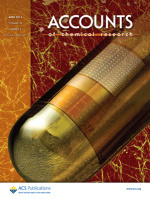
M. B. Gawande, S. N. Shelke, R. Zboril and R. S. Varma: "Microwave-Assisted Chemistry: Synthetic Applications for Rapid Assembly of Nanomaterials and Organics", ACC. CHEM. RES., vol. 47, iss. 4, pp. 1338-1348, 2014.
DOI: 10.1021/ar400309b, IF = 24.348
Abstract: The magic of microwave (MW) heating technique, termed the Bunsen burner of the 21st century, has emerged as a valuable alternative in the synthesis of organic compounds, polymers, inorganic materials, and nanomaterials. Important innovations in MW-assisted chemistry now enable chemists to prepare catalytic materials or nanomaterials and desired organic molecules, selectively, in almost quantitative yields and with greater precision than using conventional heating. By controlling the specific MW parameters (temperature, pressure, and ramping of temperature) and choice of solvents, researchers can now move into the next generation of advanced nanomaterial design and development.
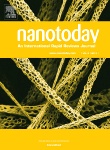
K. Hola, Y. Zhang, Y. Wang, E. P. Giannelis, R. Zboril and A. L. Rogach: "Carbon dots—Emerging light emitters for bioimaging, cancer therapy and optoelectronics", NANO TODAY, 2014.
DOI: 10.1016/j.nantod.2014.09.004, IF = 18.432
Abstract: Carbon dots represent an emerging class of fluorescent materials and provide a broad application potential in various fields of biomedicine and optoelectronics. In this review, we introduce various synthetic strategies and basic photoluminescence properties of carbon dots, and then address their advanced in vitro and in vivo bioapplications including cell imaging, photoacoustic imaging, photodynamic therapy and targeted drug delivery. We further consider the applicability of carbon dots as components of light emitting diodes, which include carbon dot based electroluminescence, optical down-conversion, and hybrid plasmonic devices. The review concludes with an outlook towards future developments of these emerging light-emitting materials.
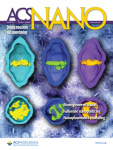
J. Tuček, K. C. Kemp, K. S. Kim and R. Zbořil: "Iron-Oxide-Supported Nanocarbon in Lithium-Ion Batteries, Medical, Catalytic, and Environmental Applications", ACS NANO, vol. 8, iss. 8, pp. 7571-7612, 2014.
DOI: 10.1021/nn501836x, IF = 12.033
Abstract: Owing to the three different orbital hybridizations carbon can adopt, the existence of various carbon nanoallotropes differing also in dimensionality has been already affirmed with other structures predicted and expected to emerge in the future. Despite numerous unique features and applications of 2D graphene, 1D carbon nanotubes, or 0D fullerenes, nanodiamonds, and carbon quantum dots, which have been already heavily explored, any of the existing carbon allotropes do not offer competitive magnetic properties. For challenging applications, carbon nanoallotropes are functionalized with magnetic species, especially of iron oxide nature, due to their interesting magnetic properties (superparamagnetism and strong magnetic response under external magnetic fields), easy availability, biocompatibility, and low cost. In addition, combination of iron oxides (magnetite, maghemite, hematite) and carbon nanostructures brings enhanced electrochemical performance and (photo)catalytic capability due to synergetic and cooperative effects. This work aims at reviewing these advanced applications of iron-oxide-supported nanocarbon composites where iron oxides play a diverse role. Various architectures of carbon/iron oxide nanocomposites, their synthetic procedures, physicochemical properties, and applications are discussed in details. A special attention is devoted to hybrids of carbon nanotubes and rare forms (mesoporous carbon, nanofoam) with magnetic iron oxide carriers for advanced environmental technologies. The review also covers the huge application potential of graphene/iron oxide nanocomposites in the field of energy storage, biomedicine, and remediation of environment. Among various discussed medical applications, magnetic composites of zero-dimensional fullerenes and carbon dots are emphasized as promising candidates for complex theranostics and dual magneto-fluorescence imaging.
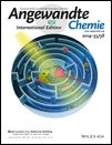
J. Fanfrlík, A. Přáda, Z. Padělková, A. Pecina, J. Macháček, M. Lepšík, J. Holub, A. Růžička, D. Hnyk and P. Hobza: "The Dominant Role of Chalcogen Bonding in the Crystal Packing of 2D/3D Aromatics", ANGEW. CHEM. INT. ED., vol. 53, iss. 38, pp. 10139-10142, 2014.
DOI: 10.1002/anie.201405901, IF = 11.336
Abstract: The chalcogen bond is a nonclassical σ-hole-based noncovalent interaction with emerging applications in medicinal chemistry and material science. It is found in organic compounds, including 2D aromatics, but has so far never been observed in 3D aromatic inorganic boron hydrides. Thiaboranes, harboring a sulfur heteroatom in the icosahedral cage, are candidates for the formation of chalcogen bonds. The phenyl-substituted thiaborane, synthesized and crystalized in this study, forms sulfur⋅⋅⋅π type chalcogen bonds. Quantum chemical analysis revealed that these interactions are considerably stronger than both in their organic counterparts and in the known halogen bond. The reason is the existence of a highly positive σ-hole on the positively charged sulfur atom. This discovery expands the possibilities of applying substituted boron clusters in crystal engineering and drug design.
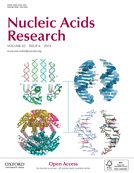
T. A. P. de Beer, K. Berka, J. M. Thornton and R. A. Laskowski: "PDBsum additions", NUCLEIC ACIDS RESEARCH, vol. 42, iss. D1, pp. D292-D296, 2014.
DOI: 10.1093/nar/gkt940, IF = 8.808
Abstract: PDBsum, http://www.ebi.ac.uk/pdbsum, is a website providing numerous pictorial analyses of each entry in the Protein Data Bank. It portrays the structural features of all proteins, DNA and ligands in the entry, as well as depicting the interactions between them. The latest features, described here, include annotation of human protein sequences with their naturally occurring amino acid variants, dynamic graphs showing the relationships between related protein domain architectures, analyses of ligand binding clusters across different experimental determinations of the same protein, analyses of tunnels in proteins and new search options.
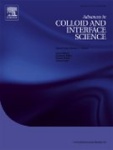
V. Sharma, K. Siskova, R. Zboril and J. Gardea-Torresdey: "Organic-coated silver nanoparticles in biological and environmental conditions: Fate, stability and toxicity", ADVANCES IN COLLOID AND INTERFACE SCIENCE, vol. 204, pp. 15-34, 2014.
DOI: 10.1016/j.cis.2013.12.002, IF = 8.636
Abstract: This review paper presents the overview of processes involved in transformation of organic-coated silver nanoparticles (AgNPs) in biological systems and in the aquatic environment. The coating on AgNPs greatly influences the fate, stability, and toxicity of AgNPs in aqueous solutions, biological systems, and the environment. Several organic-coated AgNP systems are discussed to understand their stability and toxicity in biological media and natural water. Examples are presented to demonstrate how a transformation of organic-coated AgNPs in an aqueous solution is affected by the type of coating, pH, kind of electrolyte (mono- or divalent), ionic strength, organic ligands (inorganic and organic), organic matter (fulvic and humic acids), redox conditions (oxic and anoxic), and light. Results of cytotoxicity, genotoxicity, and ecotoxicity of coated AgNPs to food chain members (plants, bacteria, and aquatic and terrestrial organisms) are reviewed. Key factors contributing to toxicity are the size, shape, surface coating, surface charge, and conditions of silver ion release. AgNPs may directly damage the cell membranes, disrupt ATP production and DNA replication, alternate gene expressions, release toxic Ag+ ion, and produce reactive oxygen species to oxidize biological components of the cell. A progress made on understanding the mechanism of organic-coated AgNP toxicity using different analytical techniques is presented.
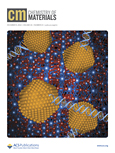
V. Urbanova, M. Magro, A. Gedanken, D. Baratella, F. Vianello and R. Zboril: "Nanocrystalline Iron Oxides, Composites, and Related Materials as a Platform for Electrochemical, Magnetic, and Chemical Biosensors", CHEM. MATER., vol. 26, iss. 23, pp. 6653-6673, 2014.
DOI: 10.1021/cm500364x, IF = 8.535
Abstract: This review represents a comprehensive attempt to summarize and discuss various sensing applications of iron oxide nanoparticles (NPs), which have attracted a great deal of attention over recent years because of their easy preparation, biocompatibility, nontoxicity, and broad range of biomedical applications. We review the application potential of nanomagnetite based amperometic sensors possessing an intrinsic enzyme mimetic activity similar to that found in natural peroxidases. In addition, we discuss the properties and applications of enzymatic sensors exploiting glucose oxidase, tyrosinase, and other enzymes for sensing a variety of important biomedical species. Among iron oxide-based nanocomposites, we highlight the use of Fe3O4@Au hybrids for designing new electrochemical aptasensors with unique versatility for binding diverse targets, including proteins and peptides. Similarly, sensing applications of composites of iron oxide NPs with graphene derivatives and carbon nanotubes are reviewed. A large part of the review focuses on the development of DNA sensors and iron oxide based immunosensors for the detection of biological and chemical pathogens, contaminants, and other important analytes. Attention is also given to nonelectrochemical sensing, including various types of magnetic, fluorescence, and surface plasmon resonance sensors.
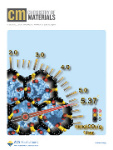
A. Panacek, R. Prucek, J. Hrbac, T. Nevecna, J. Steffkova, R. Zboril and L. Kvitek: "Polyacrylate-Assisted Size Control of Silver Nanoparticles and Their Catalytic Activity", CHEM. MATER., vol. 26, iss. 3, pp. 1332-1339, 2014.
DOI: 10.1021/cm400635z, IF = 8.535
Abstract: In this work, a simple one-step method of silver nanoparticle (NPs) preparation with controlled size is introduced. Silver NPs were prepared by reduction of [Ag(NH3)2]+ complex cation by d-maltose in the presence of low concentrations (1 × 10–10 mol/L to 1 × 10–7 mol/L) of high-molecular-weight poly(acrylic acid) (PAA). This modification of the reduction reaction results in managing of the prepared silver nanoparticles’ size in the range from 28 nm (the reaction system without PAA) to 77 nm (system with the highest used PAA concentration). The presence of poly(acrylic acid) influences both nucleation process and also the subsequent stage of nanoparticle growth. The rate of nuclei formation by homogeneous nucleation is affected by PAA due to the formation of the strong complex with silver ions which results in a prolongation of the initiation phase of the reduction process proportionally to PAA concentration. The formation of the adsorption layer of PAA on the surface of the emerging silver nuclei prevents the direct contact between silver ions and nuclei, which is necessary for continuation of the nuclei growth via heterogeneous catalytical mechanism. Because of this restriction, the silver nuclei grow up to their final size by the aggregation mechanism. The as-prepared silver NPs were tested as efficient catalysts for redox reactions. For this purpose, a model reaction, the reduction of organic dye by sodium borohydride was used. The mechanism of this reaction is discussed using the Langmuir–Hinshelwood model of heterogeneous catalysis.
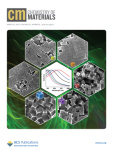
G. Zoppellaro, A. Kolokithas-Ntoukas, K. Polakova, J. Tucek, R. Zboril, G. Loudos, E. Fragogeorgi, C. Diwoky, K. Tomankova, K. Avgoustakis, D. Kouzoudis and A. Bakandritsos: "Theranostics of Epitaxially Condensed Colloidal Nanocrystal Clusters, through a Soft Biomineralization Route", CHEM. MATER., vol. 26, iss. 6, pp. 2062-2074, 2014.
DOI: 10.1021/cm404053v, IF = 8.238
Abstract: Clustering of biocompatible magnetic iron oxide nanocrystallites (MIONs) is a synthetic strategy which improves magnetic manipulation, imaging, and sensing for biomedical applications. In this work we describe the synthesis of condensed clustered MIONs obtained through biomineralization and epitaxial aggregation in the presence of alginate at ambient conditions, mimicking the process that so far has been achieved only by nature, in iron-oxidizing bacteria. These condensed-type magnetic nanostructures exhibit higher magnetophoretic responses compared to other types of magnetic colloids and clustered systems. The soft environmental conditions used for the synthesis of the magnetic nanosystems enables the alginate coating material to retain high drug loading ability for the doxorubicin molecule as well as strong binding proclivity for radionuclides. The strong binding of doxorubicin forms the physical basis to obtain magnetic nanocarriers, where the selective release of the drug occurs only under the action of external stimuli, such as remote magnetic hyperthermia or increased temperature (i.e., inflamed tissue). Furthermore, the strong binding proclivity of radionuclides facilitates in vivo SPECT imaging. The witnessed properties are obtained by using only ~17 wt % alginate content in the magnetic superstructures; thus, very high saturation magnetization value is imparted to the condensed system, expressed in terms of the hybrid’s mass. In spite of the fact that the magnetic nanoassemblies are characterized by low hydrodynamic diameter, ~45 nm, the transverse relaxivity reaches the remarkable value of 250 s–1 mM–1Fe (for negative MION contrast agents of this size), a property that validates the use of these nanostructures as effective MRI contrast agents.
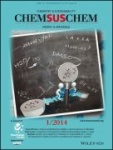
M. Gawande, V. Bonifácio, R. Luque, P. Branco and R. Varma: "Solvent-Free and Catalysts-Free Chemistry: A Benign Pathway to Sustainability", CHEMSUSCHEM, vol. 7, iss. 1, pp. 24-44, 2014.
DOI: 10.1002/cssc.201300485, IF = 7.117
Abstract: In the past decade, alternative benign organic methodologies have become an imperative part of organic syntheses and chemical reactions. The various new and innovative sustainable organic reactions and methodologies using no solvents or catalysts and employing alternative energy inputs such as microwaves, sonication, conventional and room temperature heating conditions, mechanochemical mixing, and high-speed ball milling are discussed in detail. Environmentally benign and pharmaceutically important reactions such as multicomponent, condensation, and Michael addition reactions; ring opening of epoxides; and oxidation and other significant organic reactions are discussed. An overview of benign reactions through solvent- and catalyst-free (SF–CF) chemistry and a critical perspective on emerging synergies between SF–CF organic reactions are discussed.
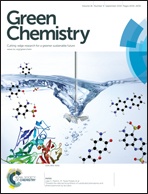
M. B. Gawande, A. K. Rathi, J. Tucek, K. Safarova, N. Bundaleski, O. M. Teodoro, L. Kvitek, R. S. Varma and R. Zboril: "Magnetic gold (nanocat-Fe-Au) nanocatalyst: catalytic applications for the oxidative esterification and hydrogen transfer reactions", GREEN CHEM., vol. 16, iss. 9, pp. 4137, 2014.
DOI: 10.1039/c4gc00774c, IF = 6.852
Abstract: An efficient and sustainable protocol is described for the oxidative esterification of aldehydes and the reduction of aromatic nitro compounds that uses magnetically separable and reusable maghemite-supported gold nanocatalyst (nanocat-Fe-Au) under mild conditions. The complex chemical, morphological, structural and size analyses, including e.g. XPS, HRTEM, in-field Mössbauer spectroscopy and HRTEM, revealed that the hybrid material is composed of well-defined stoichiometric maghemite support (20-30 nm) decorated with ultrasmall (5-6 nm) gold nanoparticles. The hybrid catalytic system containing 4 wt% of nanogold has been generated using simple impregnation methods in aqueous medium from readily available starting materials and was recycled five times without any significant loss in catalytic activity; high yields, 40-95% and 83-94% for oxidative esterification and reduction reactions, respectively, were obtained.
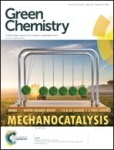
S. Saá, M. B. Gawande, A. Velhinho, J. P. Veiga, N. Bundaleski, J. Trigueiro, A. Tolstogouzov, O. M. Teodoro, R. Zboril, R. S. Varma and P. Branco: "Magnetically recyclable magnetite-palladium (Nanocat-Fe-Pd) nanocatalyst for the Buchwald-Hartwig reaction", GREEN CHEM., 2014. Advance Article
DOI: 10.1039/c4gc00558a, IF = 6.852
Abstract: The immobilization of Pd on the magnetite surface afforded Nanocat-Fe–Pd using inexpensive precursors and its catalytic role in the Buchwald–Hartwig reaction for arylation of amines and amides was investigated; C–N bond formation was achieved in moderate to excellent yields and the catalyst could be separated and recycled up to five cycles by magnetic decantation without a significant loss in yield.
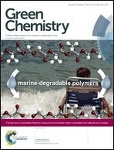
R. S. Varma: "Journey on greener pathways: from the use of alternate energy inputs and benign reaction media to sustainable applications of nano-catalysts in synthesis and environmental remediation", GREEN CHEM., vol. 16, iss. 4, pp. 2027-2041, 2014.
DOI: 10.1039/c3gc42640h, IF=6.825
Abstract: Sustainable synthetic processes developed during the past two decades involving the use of alternate energy inputs and greener reaction media are summarized. These processes include examples of coupling reactions, the synthesis of heterocyclic compounds, and a variety of reactions catalyzed by basic water or recyclable and reusable magnetic nano-catalysts in aqueous media or polyethylene glycol (PEG) using microwave (MW) irradiation or mechanochemical mixing. Micropine-structured catalysts, magnetic nanoferrites and their synthetic modifications with ligands, and decoration with other nano-metals serve as sustainable nano-catalysts in eco-friendly media. Titanium dioxide (TiO2) can be doped with metal (Ag) and nonmetal atoms such as sulfur (S), nitrogen (N) and carbon (C) to enhance its activity in visible light. These strategic approaches attempt to fulfill most of the Green Chemistry Principles in a comprehensive manner and aim to generate sustainable functional chemicals that may find large-scale use with significant waste minimization.
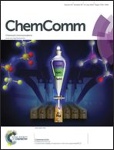
K. K. Datta, O. Kozak, V. Ranc, M. Havrdova, A. B. Bourlinos, K. Safarova, K. Hola, K. Tomankova, G. Zoppellaro, M. Otyepka and R. Zboril: "Quaternized Carbon Dots Modified Graphene Oxide for Selective Cell Labelling – Controlled Nucleus and Cytoplasm Imaging", CHEM. COMMUN., 2014.
DOI: 10.1039/c4cc02637c, IF = 6.718
Abstract: Cationic quaternized carbon dots (QCDs) and anionic graphene oxide sheets (GO) are combined via non-covalent interactions following a self-assembly pathway to form highly biocompatible and fluorescent hybrid materials. These hybrids act as selective probes with controlled labelling of the cell nucleus or cytoplasm depending on the QCDs loading.
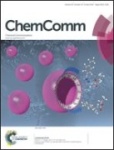
W. Liu, X. Bao, L. Mao, J. Tucek, R. Zboril, J. Liu, F. Guo, Z. Ni and M. Tong: "A Chiral Spin Crossover Metal-Organic Framework", CHEM. COMMUN., 2014.
DOI: 10.1039/c3cc48935c, IF = 6.718
Abstract: A chiral metal–organic framework exhibiting spin crossover (SCO) property, [FeII(mptpy)2]·EtOH·0.2DMF (1·solv), has been solvothermally synthesized through spontaneous resolution. It displays remarkable stability and two-step SCO at (Tc1 = 200 K) and above (Tc2 = 357 K) room temperature.
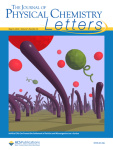
J. Sponer, P. Banáš, P. Jurecka, M. Zgarbova, P. Kührová, M. Havrila, M. Krepl, P. Stadlbauer and M. Otyepka: "Molecular Dynamics Simulations of Nucleic Acids. From Tetranucleotides to the Ribosome.", J. PHYS. CHEM. LETT., vol. 5, iss. 10, pp. 1771-1782, 2014.
DOI: 10.1021/jz500557y, IF = 6.687
Abstract: We present a brief overview of explicit solvent molecular dynamics (MD) simulations of nucleic acids. We explain physical chemistry limitations of the simulations, namely the molecular mechanics (MM) force field (FF) approximation and limited timescale. Further, we discuss relations and differences between simulations and experiments, compare standard and enhanced sampling simulations, discuss the role of starting structures, comment on different versions of nucleic acid FFs and relate MM computations with contemporary quantum chemistry. Despite its limitations, we show that MD is a powerful technique for studying the structural dynamics of nucleic acids with a fast growing potential which substantially complements experimental results and aids their interpretation.

M. Magro, D. Baratella, G. Salviulo, K. Polakova, G. Zoppellaro, J. Tucek, J. Kaslik, R. Zboril and F. Vianello: "Core–shell hybrid nanomaterial based on prussian blue and surface active maghemite nanoparticles as stable electrocatalyst", BIOSENSORS AND BIOELECTRONICS, vol. 52, pp. 159-165, 2013.
DOI: 10.1016/j.bios.2013.08.052, IF = 6.451
Abstract: A novel core–shell nanomaterial based on prussian blue (PB) coating on peculiar surface active maghemite nanoparticles (SAMNs), was developed. The synthetic process involves the direct crystallization of Fe(II)(CN)64− onto the surface of SAMNs by simple incubation in water at controlled pH, demonstrating the presence of under-coordinated Fe(III) on nanoparticle surface. The coating reaction occurs in a narrow pH range and the synthetic procedure was optimized. The resulting SAMN@PB hybrid nanostructures were characterized by transmission and scanning electron microscopy, Mössbauer, UV–vis and FTIR spectroscopy and X-ray powder diffraction. The nanomaterial, characterized by high stability in alkaline media, behave as excellent electro-catalyst for hydrogen peroxide reduction. The stability of SAMN@PB hybrid has been investigated as a function of pH, showing excellent stability up to pH 9.0 and demonstrating the feasibility of SAMNs, superficially derivatized with prussian blue, to produce an efficient and extremely stable nanostructured material. This maghemite supported nanostructured prussian blue was applied to develop a sensor, based on a simple carbon paste electrode, which was able to catalyze the electro-reduction of hydrogen peroxide, in aqueous solutions, buffered at pH 7.0, at low applied potentials (0.0 V vs. SCE).
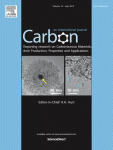
P. Lazar, E. Otyepková, P. Banáš, A. Fargašová, K. Šafářová, L. Lapčík, J. Pechoušek, R. Zbořil and M. Otyepka: "The nature of high surface energy sites in graphene and graphite", CARBON, vol. 73, pp. 448-453, 2014.
DOI: 10.1016/j.carbon.2014.03.010, IF = 6.160
Abstract: We present a simple molecular approach to control the lipophilic/hydrophilic nature of photoluminescent carbon dots (CDs) based on pyrolysis of alkyl gallate precursors. Depending on the gallic acid derivative used, CDs with different alkyl groups (methyl, propyl, lauryl) on the surface can be obtained by isothermal heating at 270 °C. This precursor-derived approach allows not only the control of lipophilicity but also the length of the particular alkyl chain enables the control over both the size and photoluminescence (PL) of the prepared CDs. Moreover, the alkyl chains on the CDs surface can be readily converted to carboxylate groups via a mild base hydrolysis to obtain water dispersible CDs with a record biocompatibility. The observed differences in PL properties of CDs and time-resolved PL data, including contributions from carbogenic cores and surface functional group, are rationalized and discussed in detail using time-dependent density functional theory (TD-DFT) calculations.
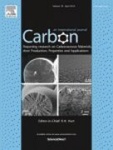
K. Hola, A. Bourlinos, O. Kozak, K. Berka, K. Siskova, M. Havrdova, J. Tucek, K. Safarova, M. Otyepka, E. Giannelis and R. Zboril: "Photoluminescence effects of graphitic core size and surface functional groups in carbon dots: COO− induced red-shift emission", CARBON, vol. 70, pp. 279-286, 2014.
DOI: 10.1016/j.carbon.2014.01.008, IF = 6.160
Abstract: Variations in the adsorption enthalpies of acetone to few-layer graphene and graphite nanopowders were analyzed as a function of surface coverage. The adsorption enthalpies were measured by inverse gas chromatography at low monolayer coverage levels (0.1–20%). The adsorption enthalpies increased from −13 kcal/mol at the lowest coverage to −7.5 kcal/mol. We fitted the measured adsorption enthalpies as a function of coverage using a two-state model and estimated the number of high-energy sites on both materials. The graphite powder had seven times more high-energy sites than the few-layer graphene, which explains why the adsorption enthalpies for graphite increased more slowly with increasing coverage. We also performed a theoretical study based on density functional theory calculations using a functional that accounts for dispersive interactions to elucidate the nature of the high-energy adsorption sites. The calculated adsorption enthalpies ranged from −16 to −1 kcal/mol while the adsorption enthalpy to a plain graphite surface was −9 kcal/mol. The high-energy adsorption sites were localized on surface steps and edge-cavities. The adsorption enthalpies at very low coverage therefore corresponded to adsorption on steps and edge cavities, while those measured at coverage levels of ∼4% or more reflected adsorption to the flat surface.
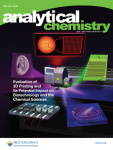
M. Volný, J. Rolfs, B. Hakimi, P. Fryčák, T. Schneider, D. Liu, G. Yen, D. T. Chiu and F. Tureček: "Nanoliter Segmented-Flow Sampling Mass Spectrometry with Online Compartmentalization", ANAL. CHEM., vol. 86, iss. 7, pp. 3647-3652, 2014.
DOI: 10.1021/ac500365r, IF = 5.825
Abstract: We report a microfluidic device, using segmented flow in a two-phase system of immiscible liquids, which delivers aqueous droplets into a modified commercial mass spectrometer. The interface coupling the microfluidics to the mass spectrometer achieves up to 96% sample transfer efficiency to the vacuum chamber. Sample ionization is assisted by multipass infrared laser beam in the interface. The system achieves low femtomole detection limits of several analytes ranging from drugs to proteins. Sample ionization in this segmented-flow sampling was found to be remarkably insensitive to the presence of buffer salts and other matrices.
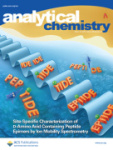
V. Ranc, Z. Markova, M. Hajduch, R. Prucek, L. Kvitek, J. Kaslik, K. Safarova and R. Zboril: " Magnetically Assisted Surface-Enhanced Raman Scattering Selective Determination of Dopamine in an Artificial Cerebrospinal Fluid and a Mouse Striatum Using Fe 3 O 4 /Ag Nanocomposite ", ANAL. CHEM., vol. 86, iss. 6, pp. 2939-2946, 2014.
DOI: 10.1021/ac500394g, IF = 5.825
Abstract: The dopaminergic neural system is a crucial part of the brain responsible for many of its functions including mood, arousal, and other roles. Dopamine is the key neurotransmitter of this system, and a determination of its level presents a demanding task needed for a deeper understanding of the processes, even pathological, involving this brain part. In this work, we present a method for a fast analysis of dopamine levels in samples of cerebrospinal fluid and mouse striatum. The method is based on a nanocomposite composed of magnetite and silver nanoparticles, whose surface is modified with iron nitriloacetic acid (Fe-NTA)—a dopamine-selective compound. The magnetic properties of this nanocomposite enable simple separation of targeted molecules from a complex matrix while the silver acts as a platform for surface-enhanced Raman scattering (SERS). Silver and magnetite nanoparticles are joined by carboxymethyl chitosan, useful in biological environments and enhancing the sensitivity due to the presence of carboxyl groups. This system reveals a good stability and reproducibility. Moreover, rapid and simple quantitative experiments show an improvement in the detection of dopamine levels in biological assays at low femtomolar concentrations. The comparative data performed with clinical samples of mouse striatum show that the developed magnetic SERS is a strong alternative to conventional high-performance liquid chromatography–mass spectrometry (HPLC–MS) with even several superior aspects including faster and cheaper analysis and no necessity of sample preconcentration or derivatization.
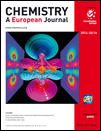
X. Chia, A. Ambrosi, M. Otyepka, R. Zbořil and M. Pumera: "Fluorographites (CFx)n Exhibit Improved Heterogeneous Electron-Transfer Rates with Increasing Level of Fluorination: Towards the Sensing of Biomolecules ", CHEMISTRY - A EUROPEAN JOURNAL, 2014.
DOI: 10.1002/chem.201402132, IF = 5.696
Abstract: Halogenated sp2 materials are of high interest owing to their important electronic and electrochemical properties. Although methods for graphite and graphene fluorination have been extensively researched, the fundamental electrochemical properties of fluorinated graphite are not well established. In this paper, the electrochemistry of three fluorographite materials of different carbon-to-fluorine ratio were studied: (CF0.33)n, (CF0.47)n, and (CF0.75)n. Our findings reveal that the carbon-to-fluorine ratio of fluorographite will impact the electrochemical performance. Faster heterogeneous electron-transfer (HET) rates and lowered oxidation potentials for ascorbic acid and uric acid are progressively obtained with increasing fluorine content. The fluorographite (CF0.75)n was in fact found to exhibit the most improved electrochemical performances with the fastest HET rates and significantly lowered overpotentials in the oxidation of ascorbic acid. Analytical parameters such as sensitivity and linearity were subsequently investigated by applying the fluorographite (CF0.75)n in the analysis of ascorbic acid and uric acid, which can be simultaneously detected. We determined good linear responses towards the detection of both ascorbic and uric acid. Fluorographites outperform graphites in sensing applications, which will have a profound impact on applications of fluorographites and fluorographene in sensing and biosensing.
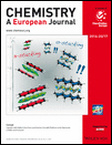
V. Schubert, F. Di Meo, P. Saaidi, S. Bartoschek, H. Fiedler, P. Trouillas and R. D. Süssmuth: " Stereochemistry and Conformation of Skyllamycin, a Non-Ribosomally Synthesized Peptide from Streptomyces sp. Acta 2897", CHEMISTRY - A EUROPEAN JOURNAL, vol. 20, iss. 17, pp. 4948-4955, 2014.
DOI: 10.1002/chem.201304562, IF = 5.696
Abstract: Skyllamycin is a non-ribosomally synthesized cyclic depsipeptide from Streptomyces sp. Acta 2897 that inhibits PDGF-signaling. The peptide scaffold contains an N-terminal cinnamoyl moiety, a β-methylation of aspartic acid, three β-hydroxylated amino acids and one rarely occurring α-hydroxy glycine. With the exception of α-hydroxy glycine, the stereochemistry of the amino acids was assigned by comparison to synthetic reference amino acids applying chiral GC-MS and Marfey-HPLC analysis. The stereochemistry of α-hydroxy glycine, which is unstable under basic and acidic conditions, was determined by conformational analysis, employing a combination of data from NOESY-NMR spectroscopy, simulated annealing and free MD simulations. The simulation procedures were applied for both R- and S-configured α-hydroxy glycine of the skyllamycin structure and compared to the NOESY data. Both methods, simulated annealing and free MD simulations independently support S-configured α-hydroxy glycine thus enabling the assignment of all stereocenters in the structure of skyllamycin and devising the role of two-component flavin dependent monooxygenase (Sky39) as S-selective.

N. F. Adegboyega, V. K. Sharma, K. M. Siskova, R. Vecerova, M. Kolar, R. Zbořil and J. L. Gardea-Torresdey: "Enhanced Formation of Silver Nanoparticles in Ag + -NOM-Iron(II, III) Systems and Antibacterial Activity Studies ", ENVIRONMENTAL SCIENCE & TECHNOLOGY, vol. 48, iss. 6, pp. 3228-3235, 2014.
DOI: 10.1021/es405641r, IF = 5.481
Abstract: This work reports the role of iron redox pair (Fe3+/Fe2+) in the formation of naturally occurring silver nanoparticles (AgNPs) in the aquatic environment. The results showed that Fe3+ or Fe2+ ions in the mixtures of Ag+ and natural organic matter enhanced the formation of AgNPs. The formation of AgNPs depended on pH and types of organic matter. Increase in pH enhanced the formation of AgNPs, and humic acids as ligands showed higher formation of AgNPs compared to fulvic acids. The observed results were described by considering the potentials of redox pairs of silver and iron species and the possible species involved in reducing silver ions to AgNPs. Dynamic light scattering and transmission electron microscopy measurements of AgNPs revealed mostly bimodal size distribution with decrease in size of AgNPs due to iron species in the reaction mixture. Minimum inhibitory concentration of AgNPs needed to inhibit the growth of various bacterial species suggested the role of surfaces of tested Gram-positive and Gram-negative bacteria. Stability study of AgNPs, formed in Ag+-humic acid/fulvic acids-Fe3+ mixtures over a period of several months showed high stability of the particles with significant increase in surface plasmon resonance peak. The environmental implications of the results in terms of fate, transport, and ecotoxicity of organic-coated AgNPs are briefly presented.
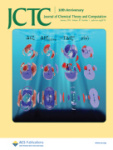
P. Kührová, M. Otyepka, J. Šponer and P. Banáš: "Are Waters around RNA More than Just a Solvent? – An Insight from Molecular Dynamics Simulations", J. CHEM. THEORY COMPUT., vol. 10, iss. 1, pp. 401-411, 2014.
DOI: 10.1021/ct400663s, IF = 5.310
Abstract: Hydrating water molecules are believed to be an inherent part of the RNA structure and have a considerable impact on RNA conformation. However, the magnitude and mechanism of the interplay between water molecules and the RNA structure are still poorly understood. In principle, such hydration effects can be studied by molecular dynamics (MD) simulations. In our recent MD studies, we observed that the choice of water model has a visible impact on the predicted structure and structural dynamics of RNA and, in particular, has a larger effect than type, parametrization, and concentration of the ions. Furthermore, the water model effect is sequence dependent and modulates the sequence dependence of A-RNA helical parameters. Clearly, the sensitivity of A-RNA structural dynamics to the water model parametrization is a rather spurious effect that complicates MD studies of RNA molecules. These results nevertheless suggest that the sequence dependence of the A-RNA structure, usually attributed to base stacking, might be driven by the structural dynamics of specific hydration. Here, we present a systematic MD study that aimed to (i) clarify the atomistic mechanism of the water model sensitivity and (ii) discover whether and to what extent specific hydration modulates the A-RNA structural variability. We carried out an extended set of MD simulations of canonical A-RNA duplexes with TIP3P, TIP4P/2005, TIP5P, and SPC/E explicit water models and found that different water models provided a different extent of water bridging between 2′-OH groups across the minor groove, which in turn influences their distance and consequently also inclination, roll, and slide parameters. Minor groove hydration is also responsible for the sequence dependence of these helical parameters. Our simulations suggest that TIP5P is not optimal for RNA simulations.

A. Mládek, P. Banáš, P. Jurečka, M. Otyepka, M. Zgarbová and J. Šponer: "Energies and 2′-Hydroxyl Group Orientations of RNA Backbone Conformations. Benchmark CCSD(T)/CBS Database, Electronic Analysis, and Assessment of DFT Methods and MD Simulations", J. CHEM. THEORY COMPUT., vol. 10, iss. 1, pp. 463-480, 2014.
DOI: 10.1021/ct400837p, IF = 5.310
Abstract: Sugar–phosphate backbone is an electronically complex molecular segment imparting RNA molecules high flexibility and architectonic heterogeneity necessary for their biological functions. The structural variability of RNA molecules is amplified by the presence of the 2′-hydroxyl group, capable of forming multitude of intra- and intermolecular interactions. Bioinformatics studies based on X-ray structure database revealed that RNA backbone samples at least 46 substates known as rotameric families. The present study provides a comprehensive analysis of RNA backbone conformational preferences and 2′-hydroxyl group orientations. First, we create a benchmark database of estimated CCSD(T)/CBS relative energies of all rotameric families and test performance of dispersion-corrected DFT-D3 methods and molecular mechanics in vacuum and in continuum solvent. The performance of the DFT-D3 methods is in general quite satisfactory. The B-LYP-D3 method provides the best trade-off between accuracy and computational demands. B3-LYP-D3 slightly outperforms the new PW6B95-D3 and MPW1B95-D3 and is the second most accurate density functional of the study. The best agreement with CCSD(T)/CBS is provided by DSD-B-LYP-D3 double-hybrid functional, although its large-scale applications may be limited by high computational costs. Molecular mechanics does not reproduce the fine energy differences between the RNA backbone substates. We also demonstrate that the differences in the magnitude of the hyperconjugation effect do not correlate with the energy ranking of the backbone conformations. Further, we investigated the 2′-hydroxyl group orientation preferences. For all families, we conducted a QM and MM hydroxyl group rigid scan in gas phase and solvent. We then carried out set of explicit solvent MD simulations of folded RNAs and analyze 2′-hydroxyl group orientations of different backbone families in MD. The solvent energy profiles determined primarily by the sugar pucker match well with the distribution data derived from the simulations. The QM and MM energy profiles predict the same 2′-hydroxyl group orientation preferences. Finally, we demonstrate that the high energy of unfavorable and rarely sampled 2′-hydroxyl group orientations can be attributed to clashes between occupied orbitals.
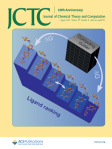
J. Řezáč and P. Hobza: "Ab Initio Quantum Mechanical Description of Noncovalent Interactions at Its Limits: Approaching the Experimental Dissociation Energy of the HF Dimer", J. CHEM. THEORY COMPUT., vol. 10, iss. 8, pp. 3066-3073, 2014.
DOI: 10.1021/ct500047x, IF = 5.310
Abstract: Hydrogen fluoride dimer is a perfect model system for studying hydrogen bonding. Its size makes it possible to apply the most advanced theoretical methods available, yet it is a full-featured complex of molecules with nontrivial electronic structure and dynamic properties. Moreover, the dissociation energy of the HF dimer has been measured experimentally with an unparalleled accuracy of ±1 cm–1(Bohac et al. J. Chem. Phys. 1992, 9, 6681). In this work, we attempt to reproduce it by purely ab initio means, using advanced quantum-mechanical computational methods free of any empiricism. The purpose of this study is to demonstrate the capabilities of today’s computational chemistry and to point out its limitations by identifying the contributions that introduce the largest uncertainty into the result. The dissociation energy is calculated using a composite scheme including large basis set CCSD(T) calculations, contributions of higher excitations up to CCSDTQ, relativistic and diagonal Born–Oppenheimer corrections and anharmonic vibrational calculations. The error of the calculated dissociation energy is 0.07 kcal/mol (25 cm–1, 2.5%) when compared to the experiment. The major part of this error can be attributed to the inaccuracy of the calculations of the zero-point vibrational energy.

M. Zgarbová, M. Otyepka, J. Šponer, F. Lankaš and P. Jurečka: "Base Pair Fraying in Molecular Dynamics Simulations of DNA and RNA", J. CHEM. THEORY COMPUT., vol. 10, iss. 8, pp. 3177-3189, 2014.
DOI: 10.1021/ct500120v, IF = 5.310
Abstract: Terminal base pairs of DNA and RNA molecules in solution are known to undergo frequent transient opening events (fraying). Accurate modeling of this process is important because of its involvement in nucleic acid end recognition and enzymatic catalysis. In this article, we describe fraying in molecular dynamics simulations with the ff99bsc0, ff99bsc0χOL3, and ff99bsc0χOL4 force fields, both for DNA and RNA molecules. Comparison with the experiment showed that while some features of fraying are consistent with the available data, others indicate potential problems with the force field description. In particular, multiple noncanonical structures are formed at the ends of the DNA and RNA duplexes. Among them are tWC/sugar edge pair, C–H edge/Watson–Crick pair, and stacked geometries, in which the terminal bases are stacked above each other. These structures usually appear within the first tens to hundreds of nanoseconds and substantially limit the usefulness of the remaining part of the simulation due to geometry distortions that are transferred to several neighboring base pairs (“end effects”). We show that stability of the noncanonical structures in ff99bsc0 may be partly linked to inaccurate glycosidic (χ) torsion potentials that overstabilize the syn region and allow for rapid anti to syn transitions. The RNA refined glycosidic torsion potential χOL3 provides an improved description and substantially more stable MD simulations of RNA molecules. In the case of DNA, the χOL4 correction gives only partial improvement. None of the tested force fields provide a satisfactory description of the terminal regions, indicating that further improvement is needed to achieve realistic modeling of fraying in DNA and RNA molecules.

T. Smutny, M. Bitman, M. Urban, M. Dubecka, R. Vrzal, Z. Dvorak and P. Pavek: "U0126, a mitogen-activated protein kinase kinase 1 and 2 (MEK1 and 2) inhibitor, selectively up-regulates main isoforms of CYP3A subfamily via a pregnane X receptor (PXR) in HepG2 cells", ARCHIVES OF TOXICOLOGY, 2014.
DOI: 10.1007/s00204-014-1254-2, IF = 5.078
Abstract: Hepatocyte tumor cell lines lack the expression or induction properties of major cytochrome P450 (CYP) enzymes compared to primary human hepatocytes. The Ras/Raf/MEK/ERK signaling cascade contributes to hepatocarcinogenesis, dedifferentiation and loss of hepatocyte drug metabolism in hepatocyte tumors. In the present study, we examined whether MEK1/2 inhibitors can restore the expression of CYP genes in hepatocarcinoma HepG2 cells. We found that U0126, a prototype dual MEK1/2 inhibitor, is a potent inducer of CYP3A4, CYP3A5 and CYP3A7 mRNA expression (>100-fold) in HepG2 cells and CYP3A4 mRNA expression in primary human hepatocytes. This U0126-mediated induction is sensitive to the transcriptional inhibitor actinomycin D and was not detected for CYP2B6 or MDR1 mRNA expression. In gene reporter assays, U0126 activates a CYP3A4 promoter luciferase reporter construct containing PXR response elements (PXREs), but not a construct containing mutated PXREs. Based on a ligand binding assay and the examination of a PXR mutant expressing an obstructed ligand binding pocket, we found that U0126 is a ligand of PXR. We also found that U0126 up-regulates the mRNA expression of the nuclear receptors HNF4α, CAR, VDR and PXR but abolishes small heterodimer partner (SHP) corepressor expression in HepG2 cells. The MEK1/2 inhibitors PD0325901 and PD184352, as well as dominant-negative MEK1 expression, also down-regulate SHP mRNA expression. In contrast, dominant-negative MEK1 expression does not significantly induce CYP3A4 gene in HepG2 cells. In conclusion, we found that U0126 is an atypical PXR ligand that via direct (binding and activation of PXR) and indirect (SHP dowregulation) mechanisms selectively restores CYP3A genes in HepG2 cells.
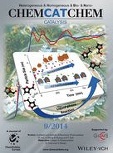
M. B. Gawande, R. Luque and R. Zboril: "The Rise of Magnetically Recyclable Nanocatalysts", CHEMCATCHEM, 2014.
DOI: 10.1002/cctc.201402663, IF = 5.044
Abstract: What to do after VHS tape? Magnetic nanoparticles are relevant alternatives to conventional inert supports from a sustainable chemistry viewpoint. By using magnetic separation, time-consuming and tedious filtration/separation/isolation protocols can be significantly simplified into a one/two-step method catalyst recovery and reuse.


